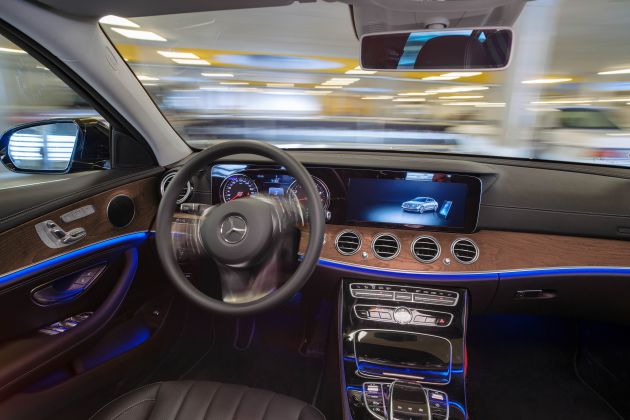Chinese carmakers have been touting advanced, highly-automated driving features for some time now but the central government has decided that enough is enough. According to Car News China, the Chinese ministry of industry and information technology (MIIT) has released strict new guidelines for these features as it looks to clamp down their public testing, marketing and usage.
Officials reportedly met yesterday regarding intelligent connected vehicle management and announced comprehensive restrictions on autonomous driving tech in a widely-circulated document. This comes after a high-profile accident in late March involving a Xiaomi SU7 driving in autonomous mode that left three people dead.
Among those restrictions is the effective outlawing of beta testing programmes that give members of the public early access to certain features, with officials stating that “public testing, whether with thousands or tens of thousands of users, must go through official approval channels.” This puts an end to tactics such as Xiaomi employing a 1,000-strong “experience team” to test its autonomous driving features.
China is also coming down on the use of terms such as “autonomous driving” and “intelligent driving” in marketing, with carmakers now required to use “L(number) assisted driving” – referring to SAE’s levels of semi and full autonomy – and to strictly adhere to those classifications.
Additionally, carmakers will no longer be able to offer unsupervised autonomous driving features, such as automated valet parking, one-touch summoning and remote parking. The idea is that because carmakers cannot ensure driver engagement and operational safety, “these functions will not be approved for products.”
One unfortunate side effect of these regulations is that driver monitoring systems will no longer be able to be disabled. This is to detect if a driver has removed their hands from the steering wheel, and if the said hands are not put back on the wheel within 60 seconds, the car will have to implement “risk mitigation strategies” such as slowing down to a stop, activating the hazard lights or pulling over.
The frequency of over-the-air updates for autonomous driving software has also been criticised, with MIIT advocating the reduction of “frequent OTA updates and improve version risk management” (i.e. carmakers will need to give themselves time to quash bugs before release). Emergency updates will now have to be registered as a recall and require market regulation approval from the state administration.
The new regulations come at an inopportune time for carmakers, given that they have likely been planning to tout their latest autonomous driving technologies at Auto Shanghai next week. It also puts a further hurdle on Tesla, which had been targeting to bring its full (and erroneously-named) Full Self-Driving suite of features to China in the previous quarter.
Looking to sell your car? Sell it with Carro.





The Beijing already started L3 autonomous regulation whereby car company also to take responsibility.
The elephant in the room is that the title has emphasized SU 7 accidents that is written in liked to autonomous, I am curious what is the legal outcome now? The incident happened at construction road diversion at speed limit of 40km/h, but driver was moving up to 117km/h and brake partially ended crashed at over90km/h?
EV crash at normal driving speed and explode. High-tech door won’t U escape also. Zero chance of survival.
What’s the use? notify
2-seconds before crash
same goes to a Petrol car that crashes into the same concrete barrier at above 90km/h.
Never trust your life to a computer.
Humans are analogue.
U can’t drive
Just call Grab
Like you
Please don’t like me
ini mesti hacker NSA CIA orang USA yg kacau
China number one!
it was fun while it lasted. ev carmakers should make sure the doors open in an accident. rip to the victims
Beijing approved new regulations on L3 autonomous vehicles, set to take effect on April 1, 2025, marking significant progress in advancing autonomous.
Robotaxi is the NeXt big thing.
There is a huge difference between actual technological advancement vs perceived technological prowess projection.
Carefully edited promotional video and KOL can only bring you this far.
Come on la. The frequent OTA updates is something that the Tesla owners are especially proud of. They treat it like it’s the best selling point of the car. One update give you few new useless feature that you will only try once while behind the scene thousands of lines of codes to fix bugs that shouldn’t be there in the first place will be overlooked.
oh and they said they get a new car once there’s an update, as if once updated their cars can grow limbs
Rugi billion2 rmb buat R & D lepas tu kena banned.